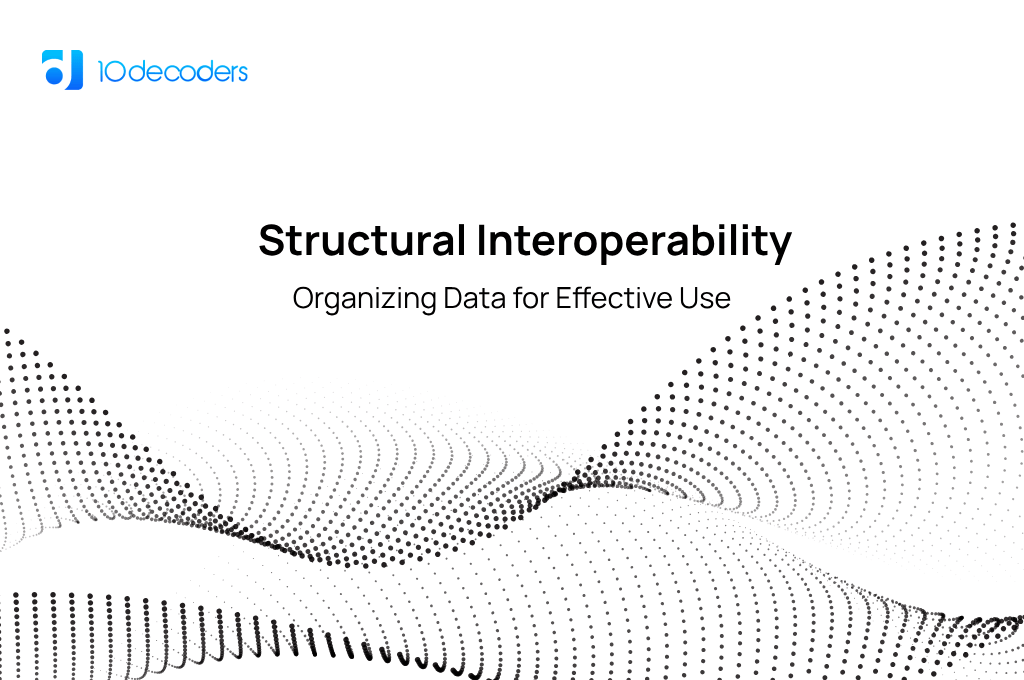Structural Interoperability: Organizing Data for Effective Use
In an era where data is the new gold, its effective utilization is pivotal for any organization seeking to thrive in the digital landscape. Structural interoperability, an often-overlooked aspect of data management, plays a crucial role in this realm. It pertains to the ability of systems and organizations to exchange data with a consistent and agreed-upon format and structure. This blog delves into the importance of structural interoperability and how it enhances the utility of data, contributing significantly to operational efficiency, innovation, and decision-making.
Understanding Structural Interoperability
At its core, structural interoperability involves the technical capacity to transfer data among various systems while maintaining its meaning and integrity. It goes beyond the mere exchange of information; it ensures that the data, once transferred, remains usable and comprehensible to the receiving system. This level of interoperability is crucial, particularly in fields like healthcare, finance, and information technology, where the accurate interpretation of data is as critical as the data itself.
1. The Evolution of Data Exchange Standards
The journey towards achieving structural interoperability starts with the evolution of data exchange standards. From XML to JSON, and from SOAP to RESTful APIs, the landscape of data exchange has undergone significant transformations. These standards have not only simplified the process of data exchange but have also laid the groundwork for maintaining structural integrity during data transfer.
2. The Role of Schemas and Ontologies
Structural interoperability relies heavily on the use of schemas and ontologies. Schemas provide a structure for data, defining the fields and types of data that can be contained within a dataset. Ontologies, on the other hand, bring a semantic layer to this structure, defining the relationships and meanings of the data elements. The use of these tools ensures that data is not only exchanged in a consistent format but also retains its contextual meaning.
3. Enhancing Data Quality and Accuracy
One of the primary benefits of structural interoperability is the enhancement of data quality and accuracy. When data is structured and standardized, the chances of errors and inconsistencies reduce significantly. This is particularly vital in scenarios where decision-making relies heavily on data accuracy, such as in clinical decision support systems in healthcare.
4. Facilitating Data Integration and Aggregation
In today’s interconnected world, the ability to integrate and aggregate data from various sources is a key competitive advantage. Structural interoperability enables organizations to bring together diverse data sets seamlessly, providing a holistic view and fostering more informed decision-making. This integration is especially crucial in fields like business intelligence and analytics, where insights are driven by comprehensive data aggregation.
5. Streamlining Regulatory Compliance
With the increasing emphasis on data privacy and security, structural interoperability plays a pivotal role in streamlining regulatory compliance. Standardized data formats ease the process of adhering to regulations like GDPR or HIPAA, as compliance checks can be more systematically implemented and audited.
6. The Challenges of Achieving Structural Interoperability
Despite its benefits, achieving structural interoperability is not without challenges. These include the complexities of aligning different data standards, the resistance to change from legacy systems, and the need for ongoing maintenance and updates of data schemas. Furthermore, there’s the challenge of balancing the standardization of data with the need for flexibility to cater to specific organizational needs.
7. Future Directions in Structural Interoperability
Going forward the field of structural interoperability is poised for significant advancements. Emerging technologies like AI and machine learning are expected to play a crucial role in automating and enhancing the processes of data standardization and integration. Moreover, the rise of blockchain technology offers promising avenues for secure and standardized data exchange across various platforms and organizations.
Structural interoperability is more than just a technical requirement; it is a strategic asset in the modern data-driven world. By ensuring that data is not only exchanged but is also structured for effective use, organizations can unlock the full potential of their data assets. As we advance, the focus on developing and implementing robust structural interoperability frameworks will be key to harnessing the power of data for innovation, efficiency, and informed decision-making. In this journey, the commitment to continuous improvement and adaptation to emerging technologies will be crucial for organizations aiming to stay ahead in the rapidly evolving digital landscape.



